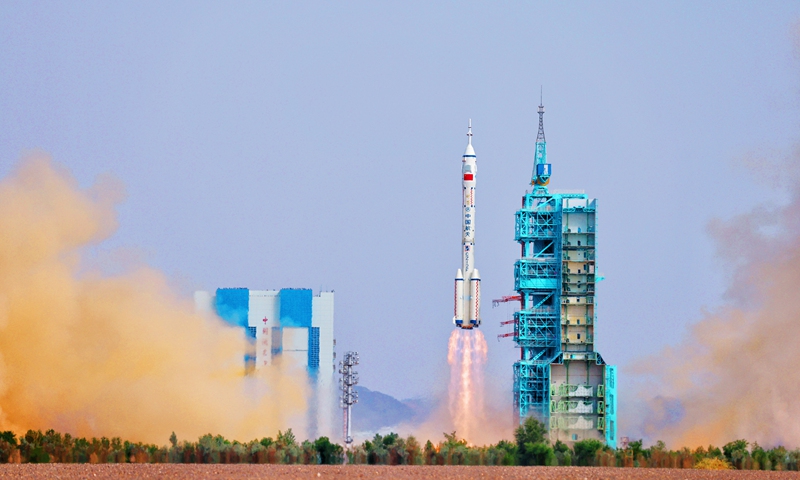Shenzhou-16 launch: China sends first civilian astronaut to ...
Among the Shenzhou-16 crew, Gui, a professor at China’s prestigious aeronautics institution Beihang University who pursued his postdoctoral studies in Canada, is the first Chinese civilian to be on a spaceflight.Highlights of Shenzhou-16 Mission
Photo: Zhang Jingyi
For the team lineup, the Shenzhou-16 for the first time includes a payload expert, Gui Haichao, along with flight engineer Zhu Yangzhu that will be led by veteran taikonaut Jing Haipeng, whose trip marks his fourth time in space. Jing will serve as the mission commander.
This is China's first time including a space engineer and a payload specialist as part of a Shenzhou crew. According to China Manned Space Agency, the space engineer's job will mainly focus on ensuring the normal operation of the spacecraft, performing necessary maintenance and inspection of spacecraft systems and equipment, including executing space walks.
While for payload specialist Gui Haichao, who has attracted the most public attention as the only non-career taikonaut to enter space, he will be responsible for managing and operating scientific researches and experimental projects in the space station, focusing mainly on the management and operation of payload.
During their mission, the Shenzhou-16 crew will continue to conduct extravehicular activities and cargo airlock extravehicular tasks, space science experiments, and the trial of new technology. The mission will also include platform management, taikonaut support system tests, and science education activities, the Global Times learned from China Aerospace Science and Technology Corporation (CASC).
This is the first manned space mission at the space station's application and development phase, and also the first radial rendezvous and docking performed under the T-structure formed by the three modules.
Compared with previous radial docking practices executed by the Shenzhou-13 and Shenzhou-14 spacecraft during the construction stage of the space station, the maneuver for this time will represent a more complex challenge, given the larger combination mass and size, and more intricate aerodynamic effects, the CASC revealed.
Specifically, with the successive joining of more modules and spacecraft including the extra-large Wentian and Mengtian lab modules, as well as manned and cargo spaceships, the space station's size, mass, inertia, and center of gravity have changed significantly, impacting the attitude control of docking vehicles, with some parameters even increasing by orders of magnitude.
Previously when the Shenzhou-14 manned spacecraft docked radially with the space station, it weighed only 47 tons. Now, the Shenzhou-16 will face a 90-ton space station complex with crew onboard.
Therefore, the Shenzhou-16 will use a relative attitude and position control manner, especially for close-range docking. The changes in motion characteristics of the space station will directly affect the spacecraft's rendezvous and docking control process.
As for the launch vehicle, deputy chief designer of the Long March-2F carrier rocket Liu Feng told the Global Times that they have made over 20 technical adjustments to improve rocket performance.
The development team has focused on improving redundancy and equipment advancement to continuously enhance the reliability of the rocket, Liu said, noting that the team has promoted the localization of various electrical system components on the rocket so as to further improve the level of independent control of the product.
The team also used digital and information technology to empower the rocket and introduced "intelligence" into data interpretation.
With the construction of remote measurement and launch support system, developers have achieved real-time communication of test data for the Long March-2F rocket, so that ground control personnel can more easily and comprehensively receive relevant data from the rocket, and carry out real-time monitoring and analysis meanwhile displaying it on the shared screen simultaneously.
Related posts:
New entry of civil aviation: China's C919 passenger plane
The rise of China’s Silicon Valley, Zhongguancun (ZGC) (中关村) - Top scientist, entities gather at popular forum






No comments:
Post a Comment